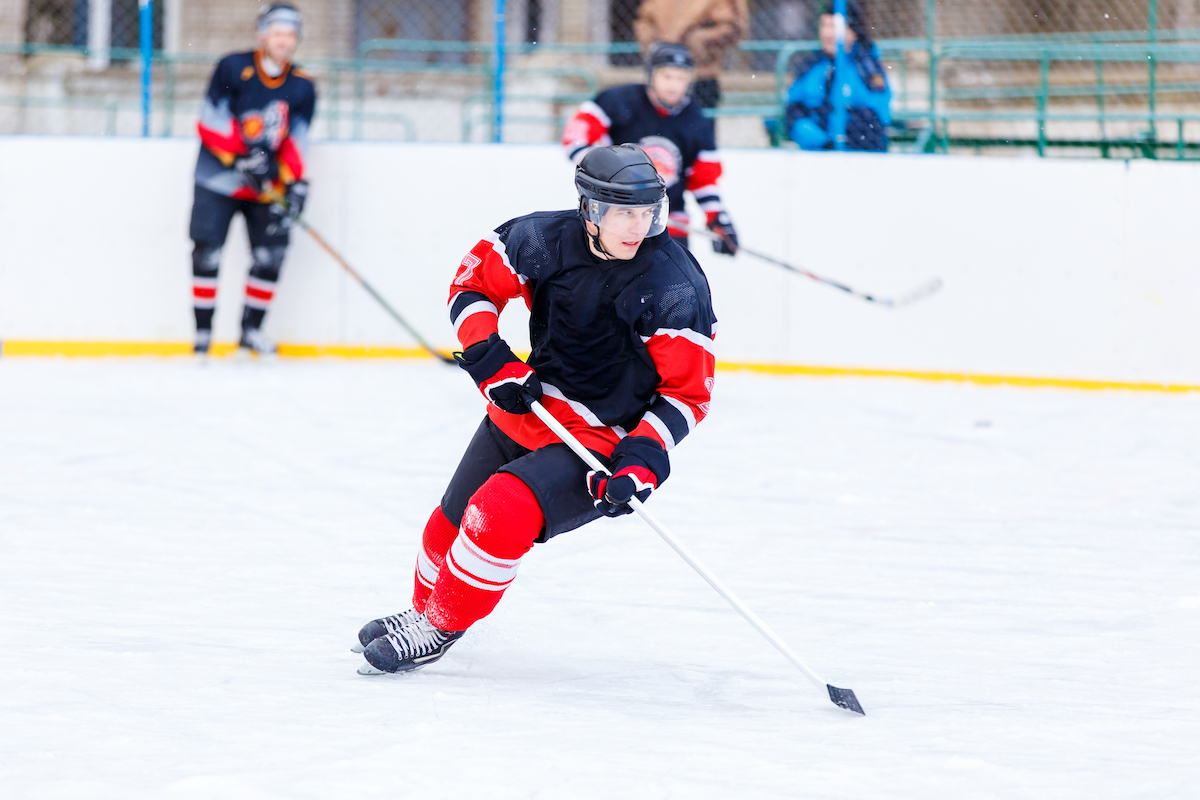
Learn how to protect yourself and your children from injury while enjoying these winter sports.
Ice-skating can be fun at any age, but it isn’t without risk: In 2017, 52,000 people in the United States went to a doctor’s office, hospital or emergency room with ice-skating injuries. Whether from complex jumps in figure skating or “checking” in ice hockey (running into another player on purpose, so they’ll drop the puck), ice sports present certain dangers that can lead to injury.
The good news is that many ice sports injuries can be prevented. Here are some common ones and how to avoid them.
What injuries can occur during figure skating?
Research suggests that figure skating injuries are on the rise, with single skaters more at risk for overuse injuries, due to increasingly difficult jumps and longer training sessions; pairs skaters are more at risk for traumatic injuries, due to throwing and lifting.
“Common injuries that arise from figure skating are categorized into traumatic and overuse injuries,” says Frank Petrigliano, MD, an orthopedic surgeon and sports medicine expert at Keck Medicine of USC and head team physician for the Los Angeles Kings hockey team. “Overuse injuries include stress fractures, tendonitis, muscle strains, knee pain (jumper’s knee) and ‘skate bite,’ which is a skin rash and tendon pain along the top of the foot and the ankle. Most of these injuries are the result of overtraining and poor technique.”
In addition to skate bite, boots can cause a bony growth on the heel called “pump bump” or Haglund’s deformity, which affects almost half of all figure skaters. It occurs when boots are too wide in the back and the heel repeatedly slides up and down against the boot.
“Figure skaters are also at risk of traumatic injuries,” Petrigliano says, “such as ankle sprains and fractures, knee ligament and cartilage injuries, and hip and head injuries sustained during falls.”
For young skaters, jumping can put as much as 100 Gs of force on landing impact. “This may result in significant injury to the axial skeleton (skull, spine and ribcage) and lower extremities,” he adds.
How can I stay safe when I’m figure skating?
Proper training, technique and equipment maintenance are imperative to avoiding figure skating injuries. Petrigliano recommends the following to prevent injuries:
- Reduce your exposure to high g-force landings, particularly when learning new jumps or skills.
- Train off the ice, with the assistance of a harness, to help ensure proper form prior to practicing new elements on the ice.
- Proper recovery may be the most important aspect to injury prevention. Spend at least 10 minutes for every hour of training to focus on stretching and flexibility.
- Participate in other athletic activities to help prevent overuse injuries and make the sport more enjoyable, especially for young athletes.
- Off-the-ice conditioning and core strength training are essential to preventing both acute and chronic conditions.
It’s called a “collision sport” for a reason
Ice hockey — a high-velocity sport involving finesse, speed and power — is gaining popularity in the United States. Record numbers of children, as well as adults, are now playing. But no matter your age, you may be at risk of injury, depending on numerous factors, ranging from your participation level to other players’ behavior.
“The unique skills and speed required to excel in ice hockey can result in a variety of injuries, many of which can be prevented,” Petrigliano says.
Head injuries and concussions have been identified as some of the most common injuries in ice hockey. “It’s possible to get a concussion even without having significant contact,” he adds.
“It’s important that coaches be aware of the most common symptoms of concussion, including headache, fatigue, irritability and light or sound sensitivity. Players who are at all concerned that they may have a concussion should be evaluated by a physician before being allowed to return to the ice.”
Petrigliano notes that other common injuries for hockey players include shoulder separations or dislocations, hip injuries and knee ligament injuries (specifically, the medial collateral ligament).
How to stay injury-free playing ice hockey
It’s a good idea for anyone who wants to play to have a proper preseason physical exam to identify people who may be at risk for injury, Petrigliano advises. He also recommends keeping the following in mind to prevent injuries:
- Make sure your gear, including a helmet with face guard, mouth guard, shoulder pads, elbow pads, gloves, cup, shin guards and skates, fits properly and isn’t worn out.
- Maintain an off-the-ice workout regimen for conditioning.
- Play by the rules, especially those that prohibit hits to the head or checking from behind, to keep yourself and others safe.
- Look where you’re going, not down at the puck, to prevent skating into something.
Whether you’re a new skater or an old hand at it, follow these tips to have fun, stay safe and develop good habits for a long career on and off the ice.
Topics
